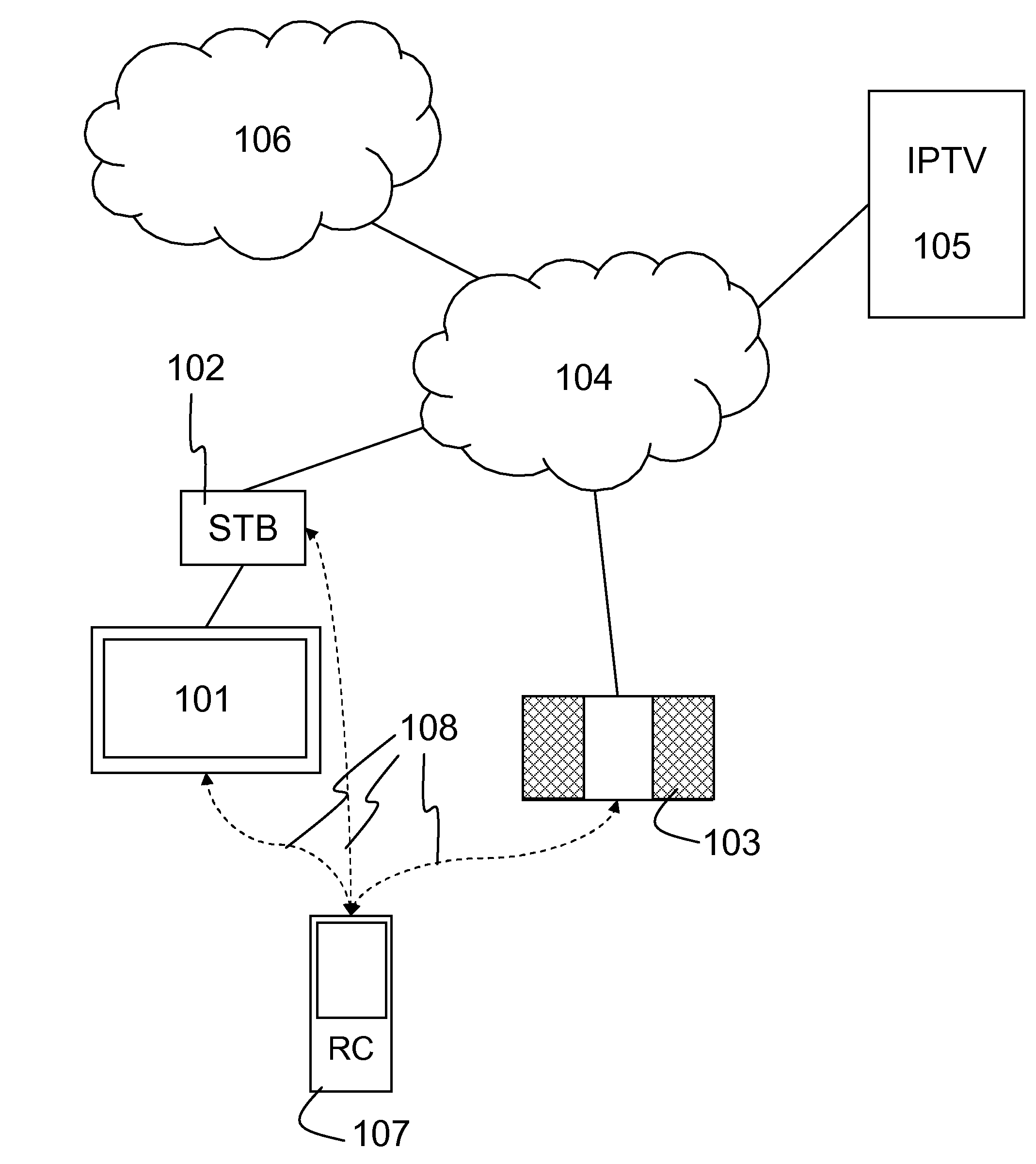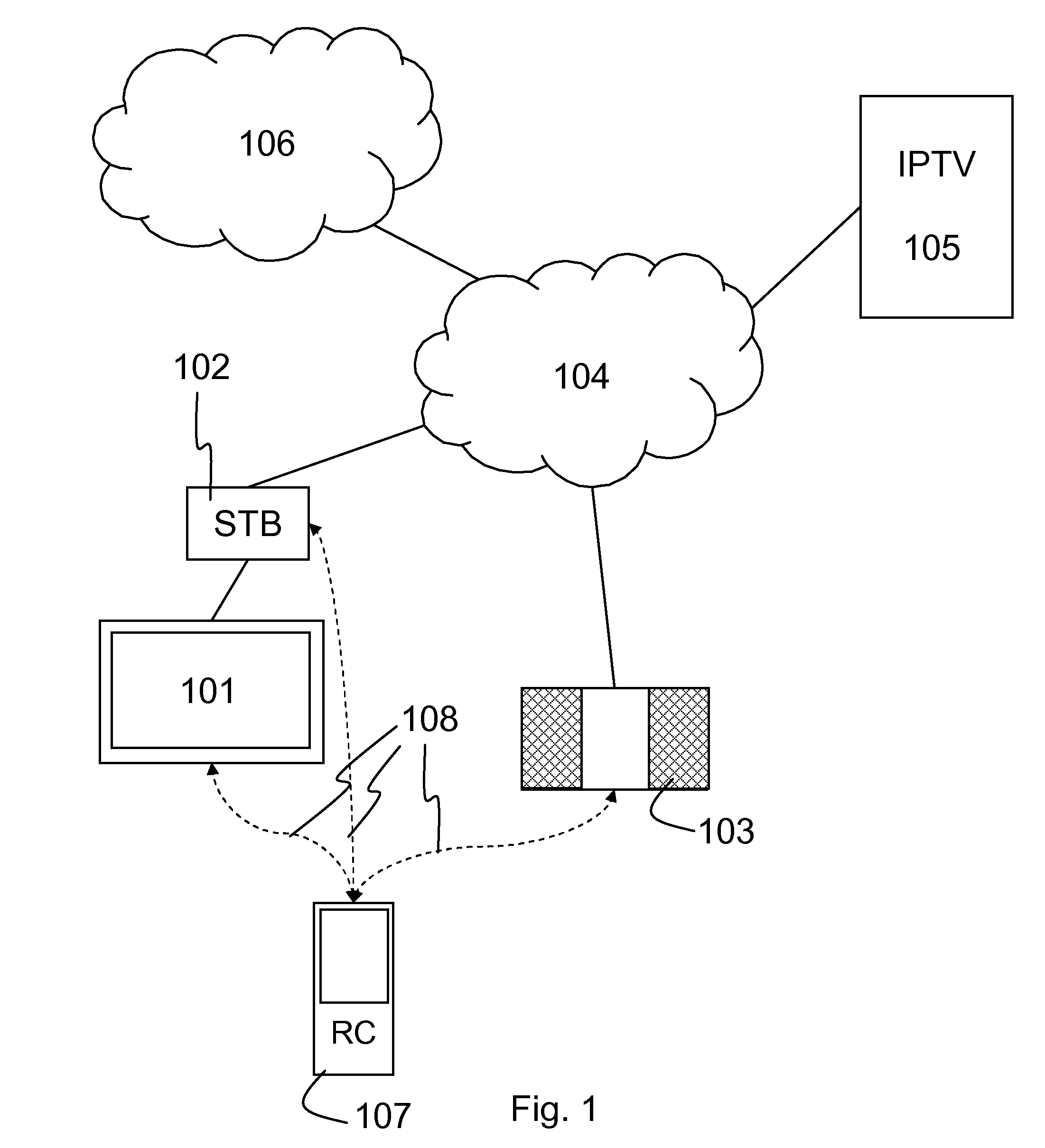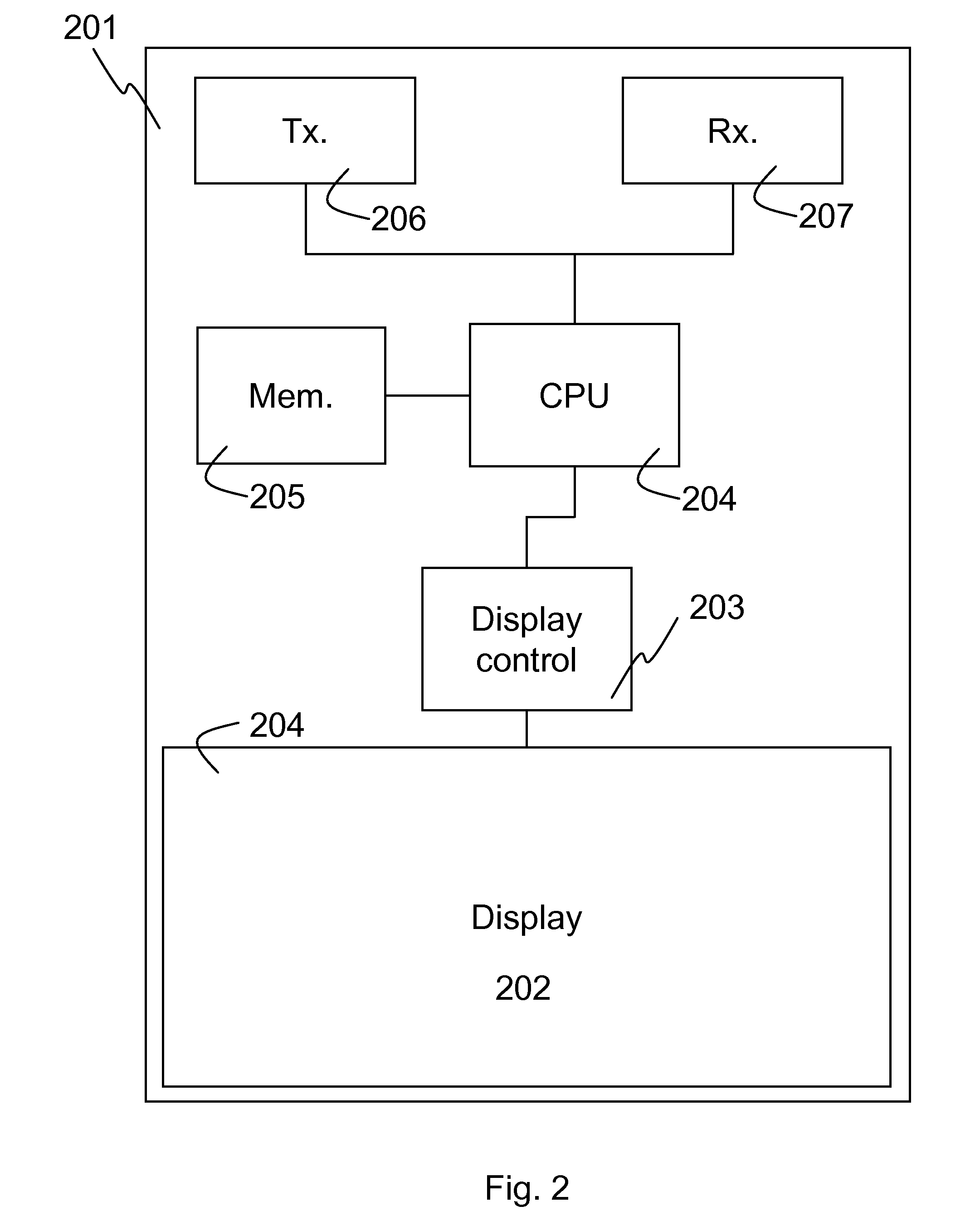Remote control for devices with connectivity to a server delivery platform
a server delivery platform and remote control technology, applied in the field of remote control for such devices, can solve the problems of inability to extend the functionality of the remote control, the limitations of the functionality of the conventional remote control, and the general cost of the touch-screen remote control, so as to increase the possibilities, limit the bandwidth, and increase the bandwidth
- Summary
- Abstract
- Description
- Claims
- Application Information
AI Technical Summary
Benefits of technology
Problems solved by technology
Method used
Image
Examples
Embodiment Construction
)
[0039]FIG. 1 illustrates an environment with a television set 101 connected to a set-top box 102 and an audio appliance 103. The set-top box 102 is connected to an access network 104, for instance an Asymmetric Digital Subscriber Line (ADSL) network which provides access to Internet Protocol Television (IPTV) service (or middleware) 105 and the Internet 106. The audio appliance 103 is also connected to the access network 104 and uses this access network 104 to communicate with music services located on the Internet 106.
[0040]Remote control 107 is used by a user to control the television set 101 for selecting channels, configuring the television set 101, switching the power off or on, etc. The remote control 107 can also be used to control set-top box 102, for instance to interact with IPTV service 105 or the Internet 106 and the remote control 107 can be used to control the audio appliance 103, for instance to change the volume, select a different song, etc. The remote control is c...
PUM
 Login to View More
Login to View More Abstract
Description
Claims
Application Information
 Login to View More
Login to View More - R&D
- Intellectual Property
- Life Sciences
- Materials
- Tech Scout
- Unparalleled Data Quality
- Higher Quality Content
- 60% Fewer Hallucinations
Browse by: Latest US Patents, China's latest patents, Technical Efficacy Thesaurus, Application Domain, Technology Topic, Popular Technical Reports.
© 2025 PatSnap. All rights reserved.Legal|Privacy policy|Modern Slavery Act Transparency Statement|Sitemap|About US| Contact US: help@patsnap.com



